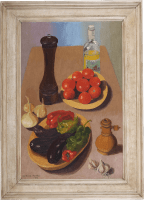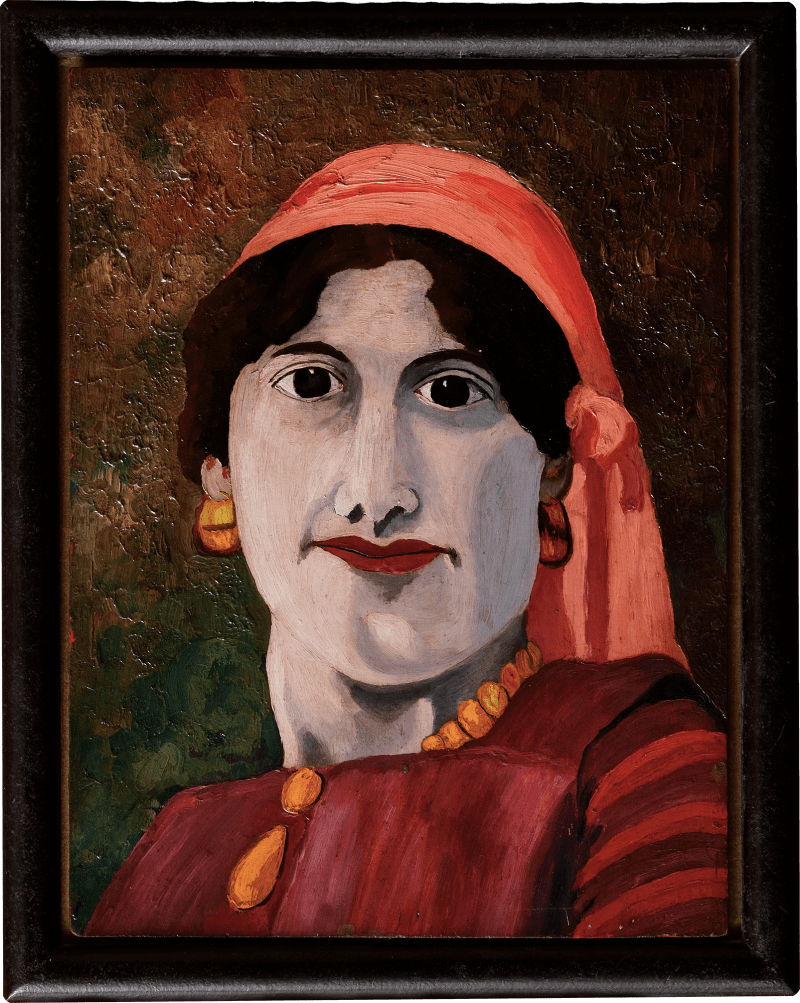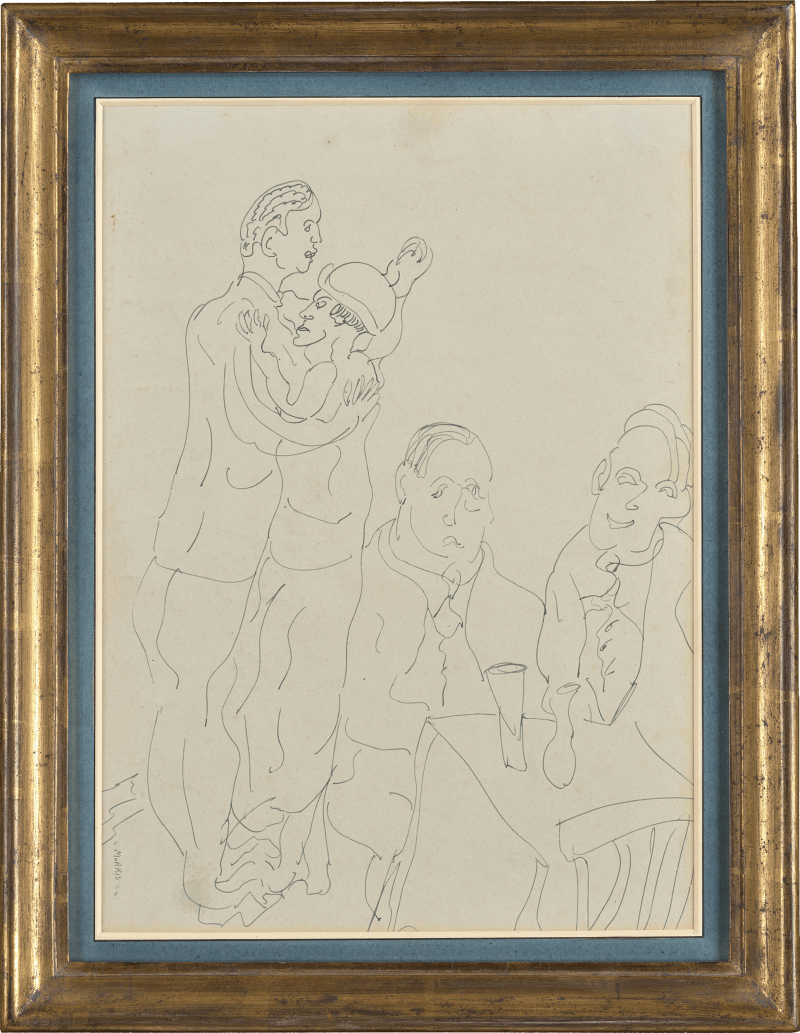In the post-war years at Benton End the kitchen was the heart of the home. It was here, surrounded by pots, pans and hungry art students that Cedric Morris’s partner Arthur Lett-Haines cooked his famously delicious dinners. The present work is a poignant reflection of this often overlooked side of life at Benton End and is painted with the same care and attention as any floral still-life work from this date.
Morris’ still-lifes from the 1940s and early 1950s often show a greater emphasis on perspective when compared to his paintings of the same genre from the 1930s, which are nearly always shown against a plain backdrop. In these later works Morris often used strong lines to create domestic interior settings as can be seen in Summer Garden Flowers (1944, currently with Philip Mould & Co.) and Flowers in an Interior (previously with Philip Mould & Co.) In this instance Morris adds a narrative to the painting through...
In the post-war years at Benton End the kitchen was the heart of the home. It was here, surrounded by pots, pans and hungry art students that Cedric Morris’s partner Arthur Lett-Haines cooked his famously delicious dinners. The present work is a poignant reflection of this often overlooked side of life at Benton End and is painted with the same care and attention as any floral still-life work from this date. Morris’ still-lifes from the 1940s and early 1950s often show a greater emphasis on perspective when compared to his paintings of the same genre from the 1930s, which are nearly always shown against a plain backdrop. In these later works Morris often used strong lines to create domestic interior settings as can be seen in Summer Garden Flowers (1944, currently with Philip Mould & Co.) and Flowers in an Interior (previously with Philip Mould & Co.) In this instance Morris adds a narrative to the painting through the title Ratatouille and by positioning the various ingredients on a kitchen tabletop; we now sit and wait for Lett to come along and start proceedings. This painting was acquired directly from Morris by Peter and Felicity Wakefield who were close friends of the artist and often visited Benton End. Felicity first visited in 1947 to see her mother who was studying there and later returned to spend her honeymoon at the house with Peter after their marriage in 1951. Peter went on to have a successful career as a diplomat and over the years they acquired many works by Morris, some of which hung in their residences around the Middle East where Morris would often stay on his plant-hunting and painting expeditions in the winter months. |













